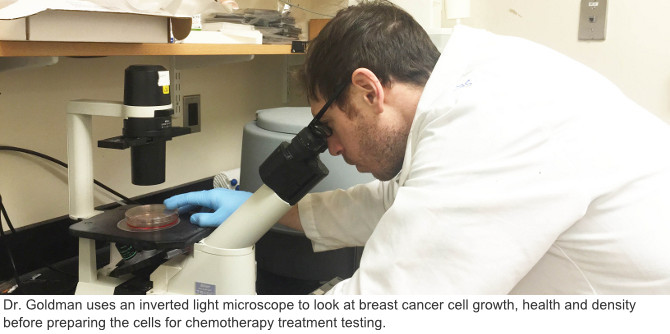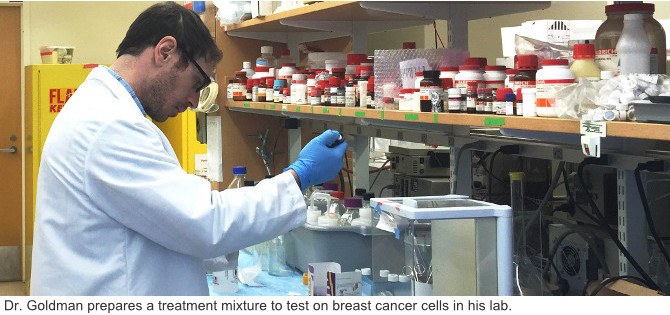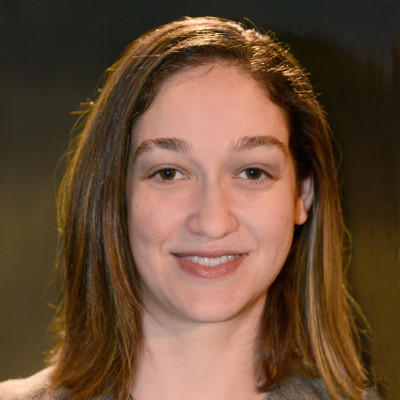Treatment Timing May Be Key to Overcoming Drug Resistance in Breast Cancer
The timing of when a patient receives certain cancer drugs may play a major role in the ultimate success of the treatment. This is according to a study published online in the journal Nature Communications February 11, 2015.
The study, led by Aaron Goldman, Ph.D., an American Cancer Society-funded researcher at Brigham and Women's Hospital, looked at the effect on breast cancer cells of giving a targeted drug immediately after administering a traditional taxane chemotherapy agent.

The researchers discovered that there appears to be a window of time – right after traditional chemotherapy has been given – that is optimal for follow up with a targeted drug, in this case, one called dasatinib. The chemo is meant to knock out cancer cells – but it doesn’t always get them all.
Goldman and his colleagues found that cancer cells that survive traditional chemo enter a transitional state temporarily – due to the chemo – during which time they are particularly vulnerable to the targeted therapy. “The cells respond to the chemo by altering their behavior,” Goldman said, which they do to adapt and survive the chemo.
This behavior change, it turns out, creates a new opportunity for attacking the cancer cells. This window opens several days after the chemo is stopped, but doesn’t stay open for long. Once the cancer cells “recalibrate” and recover from the chemotherapy, they are no longer as susceptible to the targeted drug treatment. The window stays open for about 2 to 3 weeks, based on Goldman’s tests on human tissue samples and in mice. The approach has not yet been tested in people.
Timed Combination Drug Delivery Worked Best in Aggressive Breast Cancer
“What is actually very exciting is that these temporally-sequenced combinations seem to work best against cancer cells that are not responsive to therapy, meaning it opens up a possible treatment regimen for the group of individuals who need treatment strategies most,” Goldman said.
“Additionally, triple negative breast cancer cells responded the best. Triple negative breast cancer is considered the most aggressive form of breast cancer, so this work should hopefully open the paradigm that if someone walks into the clinic with a cancer that is unresponsive to therapy 'A', we can still treat them with therapy 'A' as long as we schedule their combination therapies appropriately.”

The concept of combination therapy has been around for a long time and it takes many forms – be it a combination of different types of chemo or using targeted drugs along with chemo or some other mix of treatments. What is new is the idea that the sequence and timing of administering certain combinations of treatments could help take out more cancer cells and decrease the chances of drug-resistant cancer cells coming back.
When the researchers tested the chemo drug and the targeted therapy at the same time, the outcome was not as good – the targeted therapy had no effect.
Finding the Right Dose and Delivery Method
Goldman is now trying to figure out which dose of chemo works best to send the cancer cells into the transitional state. He is also in the early stages of building a nanoparticle – a very tiny method of delivering drugs inside the body – that could administer the right drugs at the right times. The nanoparticle would contain both the chemo and targeted drugs, but would be programmed to send each into the body at the exact right times.
Although the research is in a very early stage, Goldman hopes it will lead to clinical trials and ultimately new treatment options for patients with aggressive breast cancer – and potentially other types of cancer.
- Helpful resources
- For researchers
American Cancer Society news stories are copyrighted material and are not intended to be used as press releases. For reprint requests, please see our Content Usage Policy.




